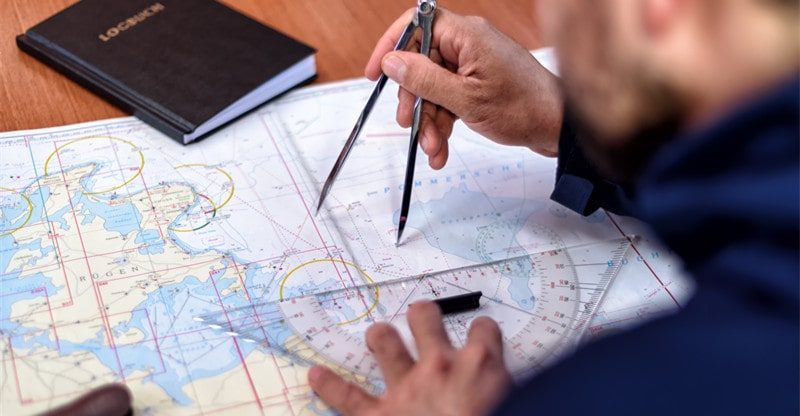Sailing Responsibly: Tips to Avoid Boating Accidents
Exploring the waters in Miami, Florida, offers a thrilling and serene escape from the bustling city life. However, amid the beauty of the ocean, safety should always take precedence to avoid any unfortunate incidents. Boating accidents can cast a shadow over what should be a joyous experience, making it essential to take preventative steps. In this article, we’ll steer you through some crucial tips on responsible sailing specific to Miami, Florida, ensuring your time on the water is enjoyable and accident-free.
Whether you’re a seasoned sailor or a newcomer to Miami’s coastal charms, these guidelines will be a reliable compass for safe navigation, especially regarding boating accidents in Miami, Florida. From understanding the significance of proper preparation to staying vigilant while on board, we’ll guide you toward a safer and more enjoyable boating experience amidst the picturesque backdrop of Miami’s coastal beauty.
1. Familiarize Yourself with Navigation Rules
Like driving a vehicle on the road, boating also entails following navigation rules. It is essential to acquaint yourself with these regulations to ensure thrilling and safe sailing. This includes maintaining a lookout, understanding right-of-way protocols in various scenarios, interpreting buoy markings correctly, and adhering to speed limits within designated areas.
2. Maintain Your Boat Properly
Regularly maintaining your boat is vital for its safety and optimal performance on the water. This involves checking the engine, electrical systems, fuel lines, and hull integrity and ensuring that safety equipment like life jackets and fire extinguishers are in good working condition. A maintained vessel is less likely to experience breakdowns or malfunctions that could lead to accidents.
3. Stay Informed about Weather Conditions
Before embarking on any boating excursion, always make it a habit to check weather forecasts and understand how they might affect your journey. Wind speed, wave height, and current conditions influence your ability to navigate safely, whether out in waters or within marinas and harbors.
4. Ensure a Safe Speed
Maintaining speed is crucial to minimizing the risk of accidents on the water. Faster speeds can reduce reaction time, making it more difficult for other boats to assess your path accurately. Continuously operate at a speed that considers prevailing conditions, such as weather, visibility (daytime or nighttime), and traffic density (busy or sparse). Remember that slower speeds are often necessary when navigating through areas or near docks.
5. Avoid Alcohol Consumption
Not operating a boat under the influence of alcohol is also extremely dangerous. Alcohol impairs judgment, coordination, and reaction time. In the United States, boating under the influence (BUI) laws are strictly enforced, with penalties to those for driving under the influence (DUI). It’s essential to designate a skipper or abstain from consuming alcohol while onboard.
6. Maintain an Appropriate Distance
Keeping a distance from vessels is vital to prevent collisions or accidents. Remember to follow the “Rule of 100” when determining distances. If you see another vessel that appears larger than your thumbnail when you extend your arm ahead, it’s likely within 100 yards and requires cautionary measures.
7. Stay Alert to Your Surroundings
Always be attentive to your surroundings. Look for hazards such as buoys, underwater objects, shallow areas, swimmers, or kayakers. Avoid distractions that may hinder your ability to navigate safely, and always maintain awareness of your surroundings.
8. Utilize Nautical Charts/GPS Devices
Navigating waters can present challenges without the use of charts or GPS devices. Ensure you have updated charts/guides that provide information on water depths, navigational aids, marked channels, and potential hazards in the area.
9. Effective Communication
Communication methods are crucial for preventing waterway accidents with traffic or limited visibility conditions (such as fog). Familiarize yourself with recognized signals (such as flag hoisting) and audio signals (such as sound signals) to effectively convey information between vessels.
10. Make Sure You Get Training
If you’re new to boating or lack experience with types of boats (like sailboats), it’s a good idea to take training courses from trusted organizations such as the U.S. Coast Guard Auxiliary or U.S. Power Squadrons. These programs will teach you boat handling techniques, navigation principles, and emergency procedures, giving you confidence when on the water.
Conclusion
Being a sailor means savoring your time on the water and prioritizing safety for yourself and others.
By wholeheartedly embracing these suggestions—knowing the navigation rules properly, maintaining your boat, staying mindful of weather conditions, controlling your speed, avoiding alcohol while boating, keeping a safe distance from other vessels, staying acutely aware of your surroundings, utilizing nautical charts or GPS devices effectively, communicating effectively with other boaters, and receiving proper training—you can substantially reduce the chances of boating accidents.
So, go ahead and set sail responsibly, embark on an unforgettable journey on the water, and ensure that safety remains your unwavering guiding star throughout your maritime adventures!



